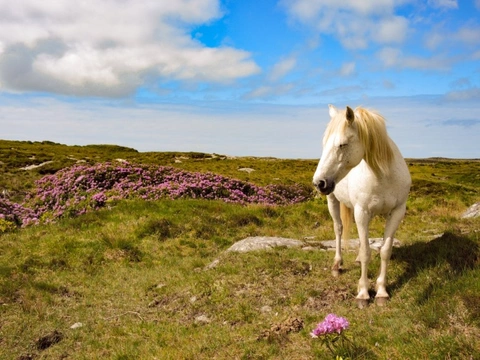
Buying a Native Pony
The British Isles is the envy of the equestrian world as it is home to nine native breeds of pony spread across all four countries in the UK – that is definitely something for everyone!
Amongst the larger breeds are the New Forest, the Highland, the Connemara from Ireland and the Dales and the Fell from the North of England. Smaller breeds including the Dartmoor and the Exmoor from the South West, the Shetland from the Scottish Islands of the same name and the Welsh which spans both the large and small categories as it is subdivided into four types – Section A, B,C and D.
Why are native ponies so popular?
Most people have a favourite native breed and it might be the pony they rode as a child or one that they have come across at some point in their life. Each breed has a dedicated almost cult following but why are they so popular?
Across all the different breeds, one of the key reasons for their popularity is simply their versatility – there is almost nothing a native cannot do. Showing, jumping, hunting, Pony Club, Riding Club events, side saddle and driving and many ponies are involved in several of these disciplines.
The other great advantage of these breeds is their hardiness. By and large, they are hardy and thrive well in a simple management routine so they can usually live out all year round and many work without the requirement for shoes. Forage needs are simple and they are mostly good doers, often too good a doer so their weight needs to be kept in check.
Breed societies
Each breed has its own breed society which represents the interests of the pony and the owners and breeders; this is often a good place to start if you are looking to buy your first native.
Breed societies run studbooks and performance schemes so ponies competing in one or more of the disciplines can add up points during the year based on how well they do across the different sporting events.
Showing
Showing native ponies is immensely popular and is a showcase for the different breeds. There are numerous classes right from local show level to county shows with prestigious qualifiers for the Royal International Horse Show (RIHS), the Horse of the Year Show (HOYS) and the one everybody wants to win, the Mountain and Morland final at the London International Horse Show held at Olympia just before Christmas.
Showing is either in hand or ridden and there are also a series of working hunter classes for native ponies usually divided on height. Large shows will have individual breed classes whereas smaller events will tend to split the breeds between large and small. Usually, ponies have to be registered with their respective breed society to show at a decent level but some of the smaller local shows will have classes for unregistered ponies.
Endangered breeds
Some breeds like the Welsh have never been more popular, others are lower in numbers and have come to the attention of the Rare Breeds Survival Trust.
In 2021, the ‘Priority’ equine breeds on the RBST Watchlist are the Dales, the Dartmoor and the Exmoor. On the ‘At Risk’ list is the Fell, the Highland and the New Forest which leaves only three native breeds – the Connemara, Welsh and the Shetland – with sufficient numbers to be deemed safe.
Buying one of the ‘at risk’ or ‘priority’ breeds is doing your bit to help ensure the survival of a unique piece of equine heritage in the UK.
Versatility
One of the reasons why native ponies are so popular is because they can used for so many different equestrian activities; the larger breeds often double up as family ponies and will happily take an adult as well as a child.
Once small ponies are finally outgrown by the children, they are often broken to harness or kept to show in hand.
Cross breeds
Crossing native breeds with another type of horse, commonly the Thoroughbred, produces a very popular cross, Connemara x Thoroughbred being one of the most favoured.
The larger breed adds height and speed whilst retaining the pony cleverness and hardiness. There are many Connemara crosses seen out eventing, easy to spot with their broad grey faces or distinctive dun coat colouring. Many of the breed societies extend their performance schemes to include part-bred ponies.
What is the Eriskay pony?
Not included for some reason in the core of nine native breeds, the Eriskay is an ancient Scottish breed which originated in the Outer Hebrides. A small population has remained protected from crossbreeding by the remoteness of the islands. On the ‘Priority’ list with the Rare Breeds Survival Trust, the Eriskay pony has a breed society which was formed in 1972, the Eriskay Pony Society, and which has HRH the Prince of Wales as its patron.
Another maverick breed not included in the original nine native breeds, is the Lundy pony. This breed was first developed in 1928 on Lundy Island which is situated off the North Devon coastline when the owner of the island, Martin Coles Harman, brought across 34 New Forest pony mares, 8 foals and a strawberry roan Welsh Section B stallion.
The herd was eventually moved from the island in 1980 and taken to Cornwall where breeding continues. Some were also taken to Devon and in 1984, the Lundy Pony Breed Society was formed to regulate the breed. The society later decided to return some of the mares and foals to the island of Lundy.
If you are considering ‘going native’ then you really will be spoilt for choice and you can be sure that whichever breed you do end up choosing, you will have years of fun ahead with a loyal pony companion.



